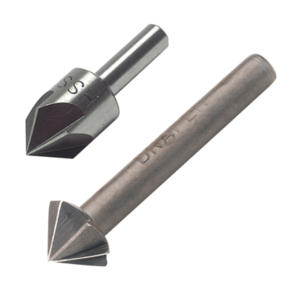Countersink Bits: Difference between revisions
From DT Online
mNo edit summary |
mNo edit summary |
||
| Line 11: | Line 11: | ||
'''Rose Countersinks''' are also available fixed in a file handle so that they can be used by hand. This can be more convenient than constantly changing the bit in drill when only a few holes need countersinking in wood. | '''Rose Countersinks''' are also available fixed in a file handle so that they can be used by hand. This can be more convenient than constantly changing the bit in drill when only a few holes need countersinking in wood. | ||
{{ | {{Countersink Bits Buyers Guide}} | ||
[[Category:Drilling and Boring]] | [[Category:Drilling and Boring]] | ||
Revision as of 09:40, 15 May 2016
Description
Countersink Bits or drills, are used to Chamfer or bevel the edge of a drilled hole such that a Countersunk Head Screw can be seated flush with material surface.
Features and Uses
They are available in a range of point angles but the most common for general purposes is 90°. Short fluted designs are chosen for working in metal and are made of High Speed Steel (HSS) for this purpose. The longer Rose Countersink is made of Carbon Steel but is often preferred for working in wood.
Rose Countersinks are also available fixed in a file handle so that they can be used by hand. This can be more convenient than constantly changing the bit in drill when only a few holes need countersinking in wood.
- For most non-critical work in Design and Technology, countersinking can be achieved using a Twist Drill twice the diameter of the hole in question.
- Combined Countersink, Pilot Drill and Counterbore drills can greatly speed up assembly work in wood.
- For more precise work, purpose made Countersink Bits are available.
- Choose High Speed Steel if countersinking steel since ordinary Carbon Steel is suitable only for wood and plastics.
 |
 |
 |
| Draper Hand Countersink Bit |
Countersinking Drills |
Combined Countersink, Pilot Drill and Counterbore drills |
